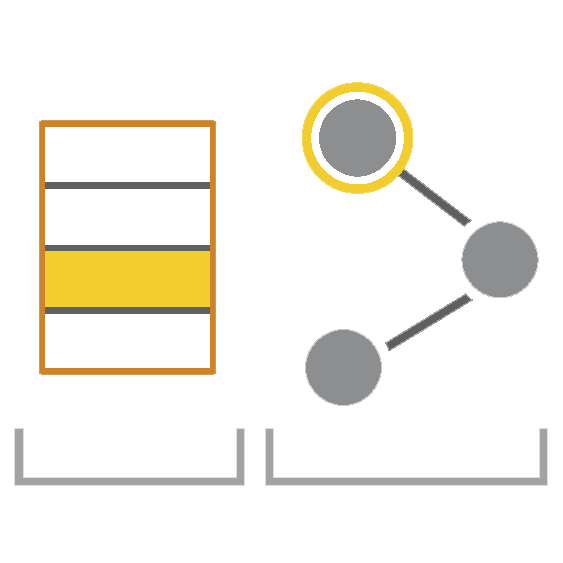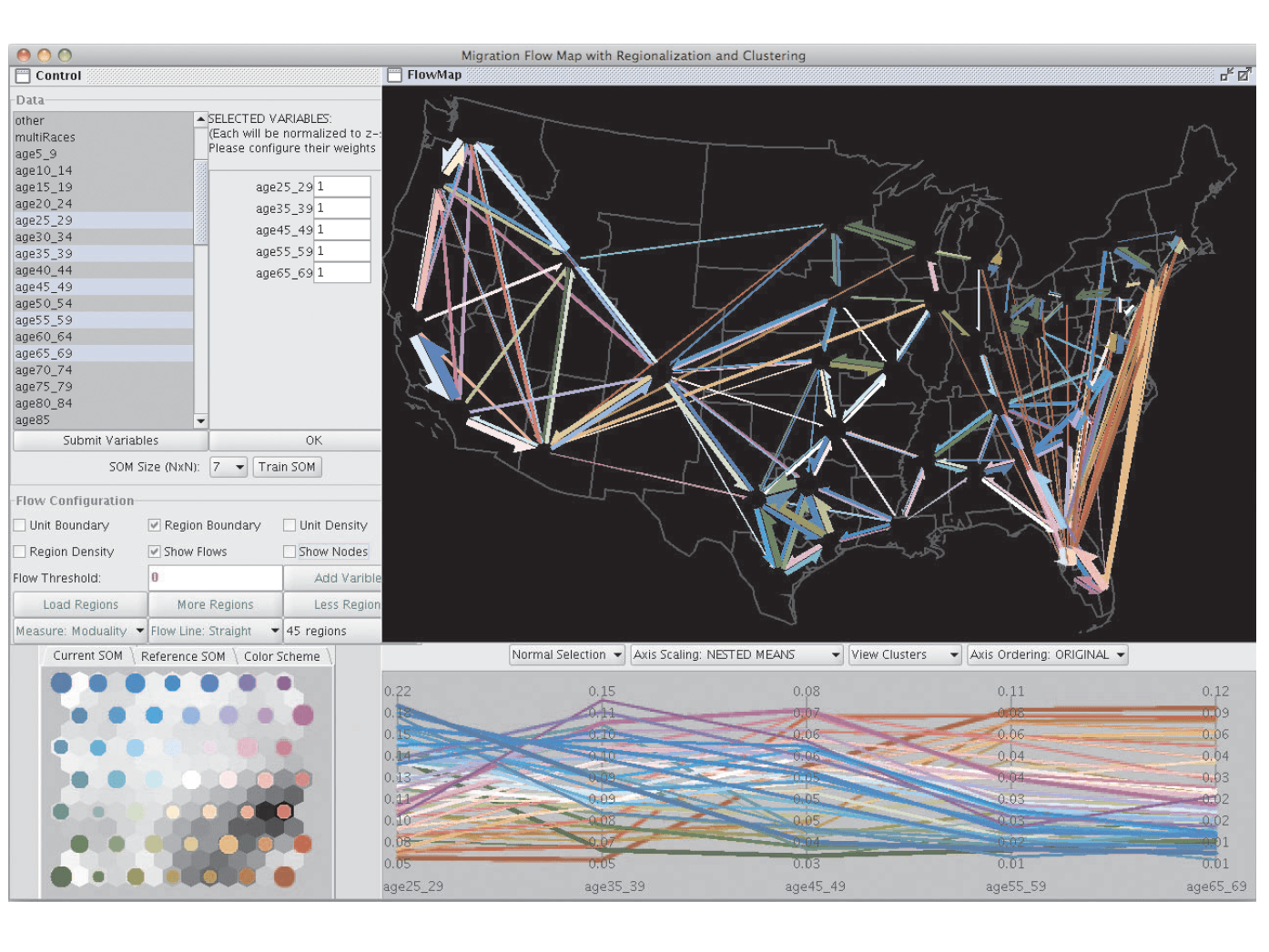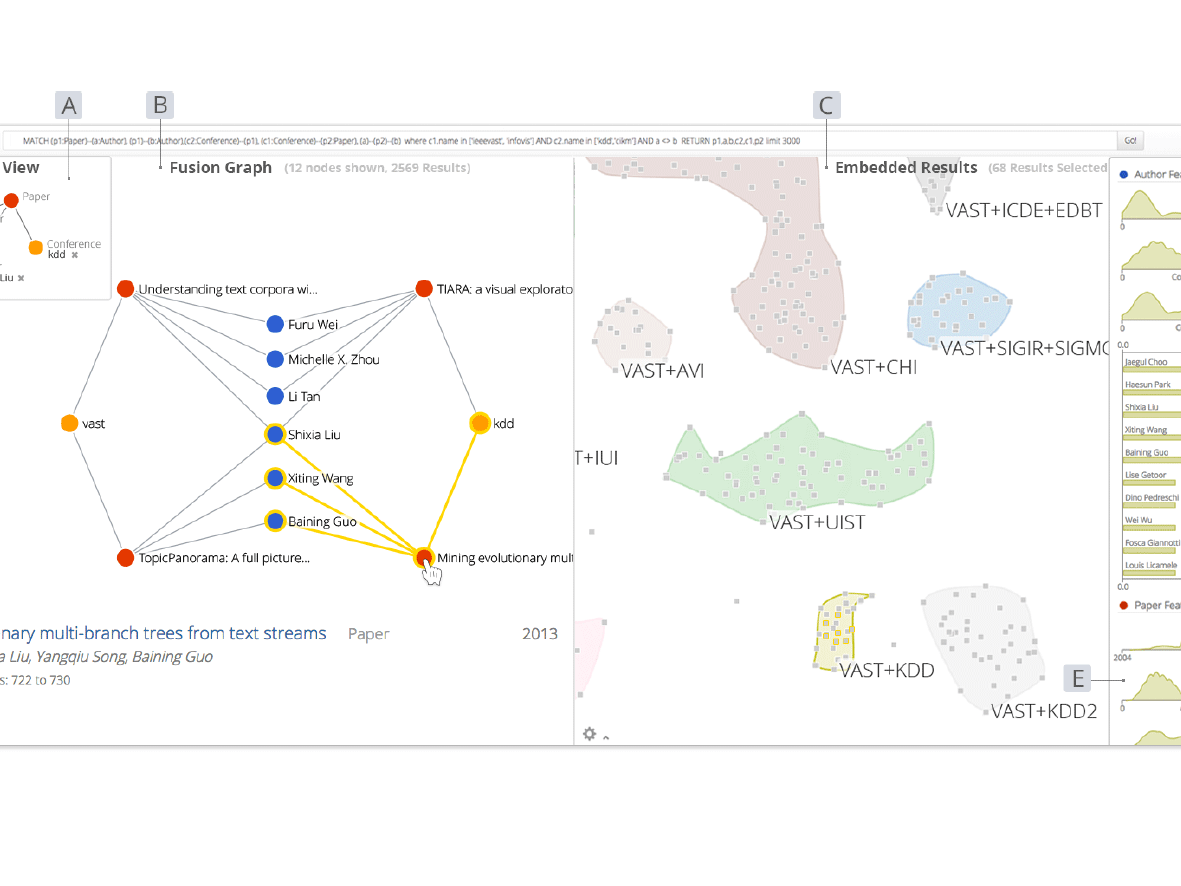In the context of MCV visualization, juxtaposed views separate the topology visualization from the attribute visualization into two or more views. Links between the topology and the attributes are not encoded and typically are revealed through interaction by linking and brushing.
Optimized for networks with several, heterogenous, node or attributes. Also ideal for layered networks and trees.
Supports medium networks, as well as tasks on clusters and subnetworks.
Not ideal for large or dense networks, as well as tasks on neighbors and paths.


